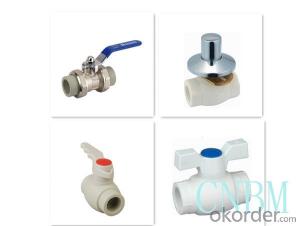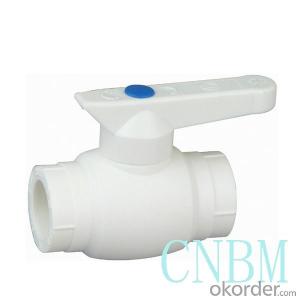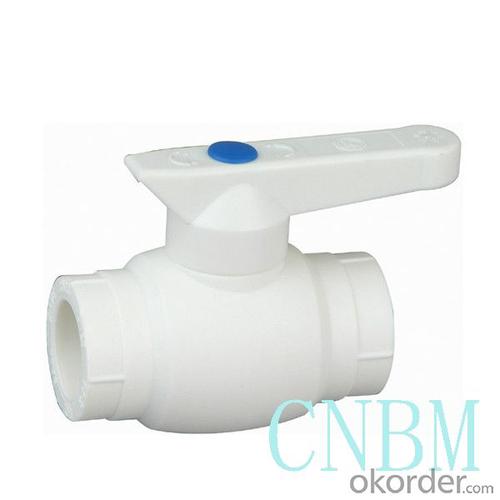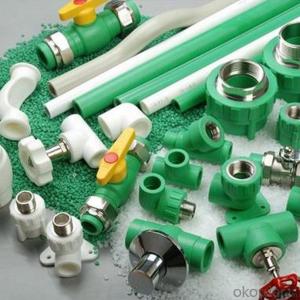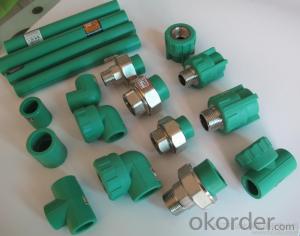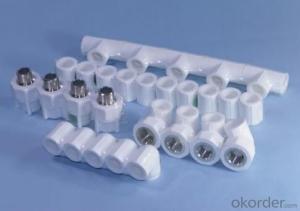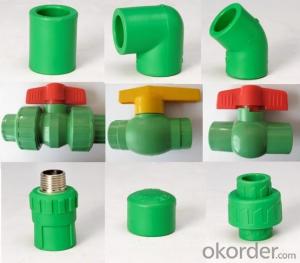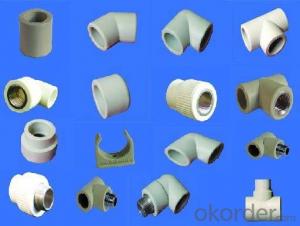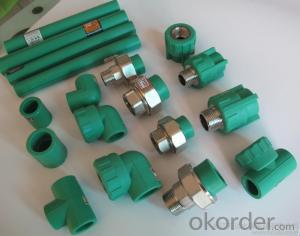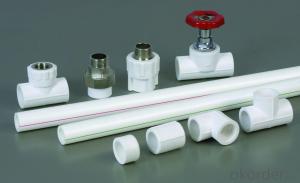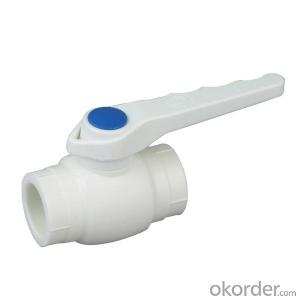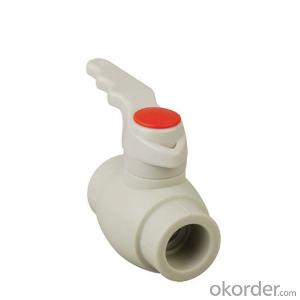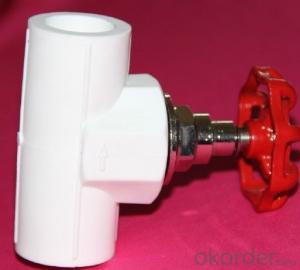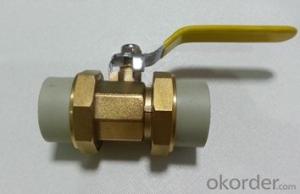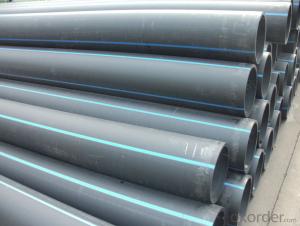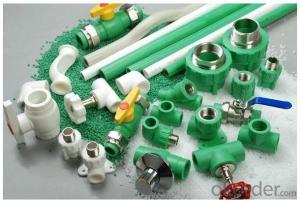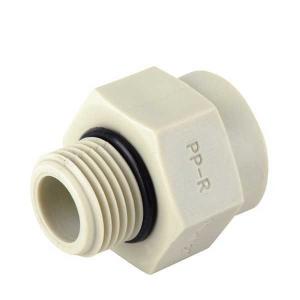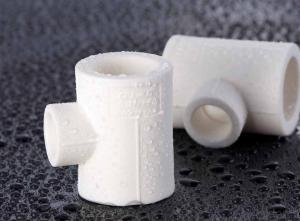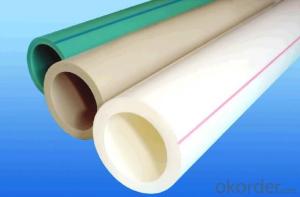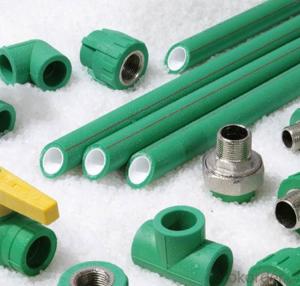1 1/2 Inch PPR Ball Valve for Industrial and Agricultural Fields in 2024
- Loading Port:
- Tianjin
- Payment Terms:
- TT OR LC
- Min Order Qty:
- 1000 pc
- Supply Capability:
- 100000 pc/month
OKorder Service Pledge
OKorder Financial Service
You Might Also Like
Product Overview
1) Cold / hot water supply facilities for public buildings
2) Food, chemical, electronic industry pipeline networks; Such as Pipeline networks for transporting all kinds of corrosive liquids
3) Drinking water production system pipeline networks; Such as Pure water and mineral water
4) Air conditioning facility pipelines
5) Compressed gas pipeline networks for industry
6) Pipeline networks for swimming pools
7) Pipeline networks for solar energy facilities
8) Agriculture and garden production transporting systems
Advantanges
1, High Temperature Resistance: the maximum sustained working temperature is up to 70 Degrees Celsius, the maximum transient temperature is up to 95 Degrees Celsius.
2, Heat insulation and Saving Energy: low thermal conductivity which is only 1/1500 of brass pipe, and 1/250 of steel pipe.
Non-toxic: no heavy metal additives would not be covered with dirty or contaminated by bacterium.
3, Corrosion Resistant: resist chemical matters or electron chemical corrosion.
4, Lower Installation Costs: light weight and good hot-melt performance can reduce installation costs by as much as 50% over metal piping system.
5, Higher Flow Capacity: smooth interior walls result in lower pressure loss and higher volume than metal pipes.
6, Long Life: more than 50 years under normal conditions.
7, Recycled and Environment-friendly.
Product Description
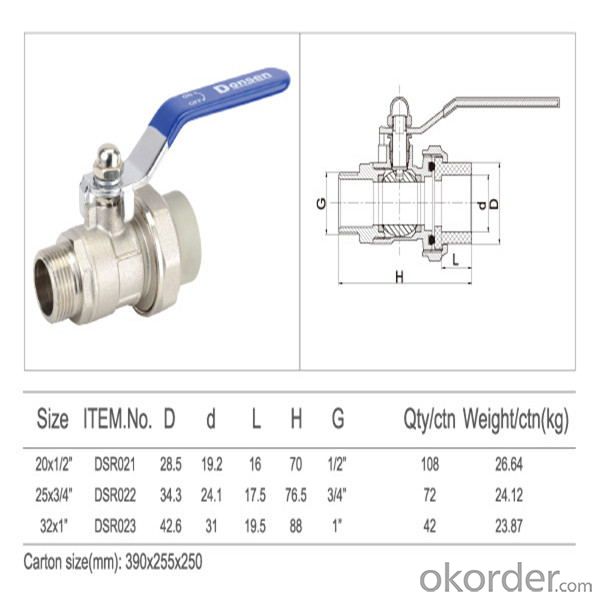
Product Show
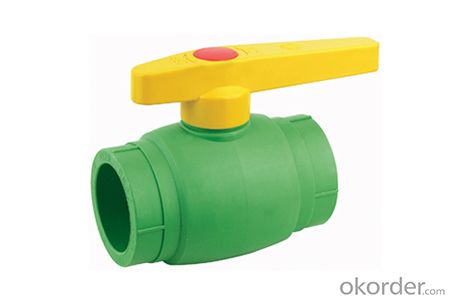

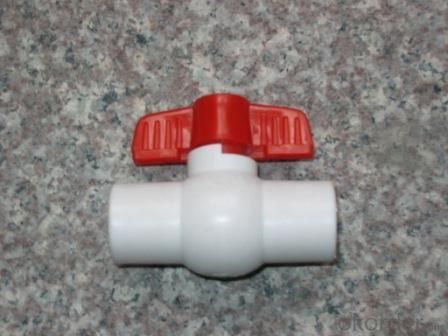
FAQ
Q1: How Can I Get A Sample?
A1: You can get samples by communicate with our export sales.
Q2: How Long Is Delivery?
A2: Delivery time will be30-45days according to order quantity.
Q3: What Is The MOQ?
A3: MOQ depends on different items.
Q4: What Is Our Normal Payments Terms?
A4: Our normal payment terms now is: T/T, L/C or western union, pay
- Q: Can plastic pipe fittings be used for HVAC systems?
- Yes, plastic pipe fittings can be used for HVAC systems. Plastic pipe fittings are commonly used in HVAC systems due to their durability, resistance to corrosion, and ease of installation. They are often made from materials such as PVC, CPVC, or PEX, which are suitable for carrying both hot and cold water in HVAC applications. Plastic pipe fittings are also cost-effective, making them a popular choice for HVAC installations.
- Q: Are plastic pipe fittings resistant to scaling and buildup?
- Yes, plastic pipe fittings are generally resistant to scaling and buildup.
- Q: TTP-PESI hole net steel belt composite pipe fittings need to be taken?
- Mesh steel composite plastic pipe, with cold rolled steel strip and hot plastic as raw material, using porous thin-walled steel tube argon arc butt welding molding as reinforcement, a new type of composite pressure pipe outer layer and the inner layer of the double composite thermal plastic (PESI, also known as Yum tube) to be solved, galvanized pipe is disabled, a revolutionary technology of building water supply main vertical pipe and pipe network system.
- Q: What sizes are plastic pipe fittings available in?
- Plastic pipe fittings are available in a wide range of sizes, typically ranging from ½ inch to 12 inches in diameter, depending on the specific type and application.
- Q: Are plastic pipe fittings resistant to UV radiation?
- Yes, plastic pipe fittings can be resistant to UV radiation. Many modern plastic pipe fittings are specifically designed and manufactured with UV stabilizers, which help to protect them from the damaging effects of UV radiation. These stabilizers prevent the plastic from degrading, becoming brittle, or losing its structural integrity when exposed to sunlight and other sources of UV radiation. However, it is important to note that not all plastic pipe fittings are UV resistant, so it is crucial to choose fittings that are specifically labeled or specified to have this property if UV exposure is a concern.
- Q: Can plastic pipe fittings be used in liquid fertilizer systems?
- Yes, plastic pipe fittings can be used in liquid fertilizer systems. Plastic fittings are commonly used in agricultural applications due to their durability, resistance to chemicals, and affordability. However, it is important to select fittings that are compatible with the specific liquid fertilizer being used to ensure proper functioning and avoid any potential chemical reactions or corrosion.
- Q: What are plastic pipe fittings?
- Plastic pipe fittings are connectors used to join or connect sections of plastic pipes together. These fittings are designed to create a secure and leak-proof connection, allowing for the efficient flow of liquids or gases through the piping system. They come in various shapes, sizes, and types to accommodate different pipe sizes and applications.
- Q: How do you repair a broken plastic pipe fitting?
- To repair a broken plastic pipe fitting, the first step is to turn off the water supply to prevent further damage. Then, clean the area around the break with a cloth or brush. Next, use a PVC or plastic pipe cement to carefully apply adhesive to both the broken ends of the fitting and the corresponding pipe. Press the pieces together firmly, ensuring a tight seal. Allow the adhesive to dry completely before turning the water supply back on. It is important to note that if the break is severe or the fitting is extensively damaged, it may be necessary to replace the entire fitting.
- Q: What is the maximum pressure rating for plastic pipe fittings?
- The maximum pressure rating for plastic pipe fittings can vary depending on the type and size of the fitting, as well as the material it is made of. However, commonly used plastic pipe fittings often have a maximum pressure rating of around 150-200 psi. It is important to consult the manufacturer's specifications or industry standards to determine the specific maximum pressure rating for a particular plastic pipe fitting.
- Q: Can plastic pipe fittings be used for chemical dosing in water treatment?
- Yes, plastic pipe fittings can be used for chemical dosing in water treatment. Plastic fittings are often preferred due to their corrosion resistance, durability, and cost-effectiveness. However, it is crucial to select fittings that are compatible with the specific chemicals being dosed to ensure safe and effective water treatment processes.
Send your message to us
1 1/2 Inch PPR Ball Valve for Industrial and Agricultural Fields in 2024
- Loading Port:
- Tianjin
- Payment Terms:
- TT OR LC
- Min Order Qty:
- 1000 pc
- Supply Capability:
- 100000 pc/month
OKorder Service Pledge
OKorder Financial Service
Similar products
Hot products
Hot Searches
Related keywords
